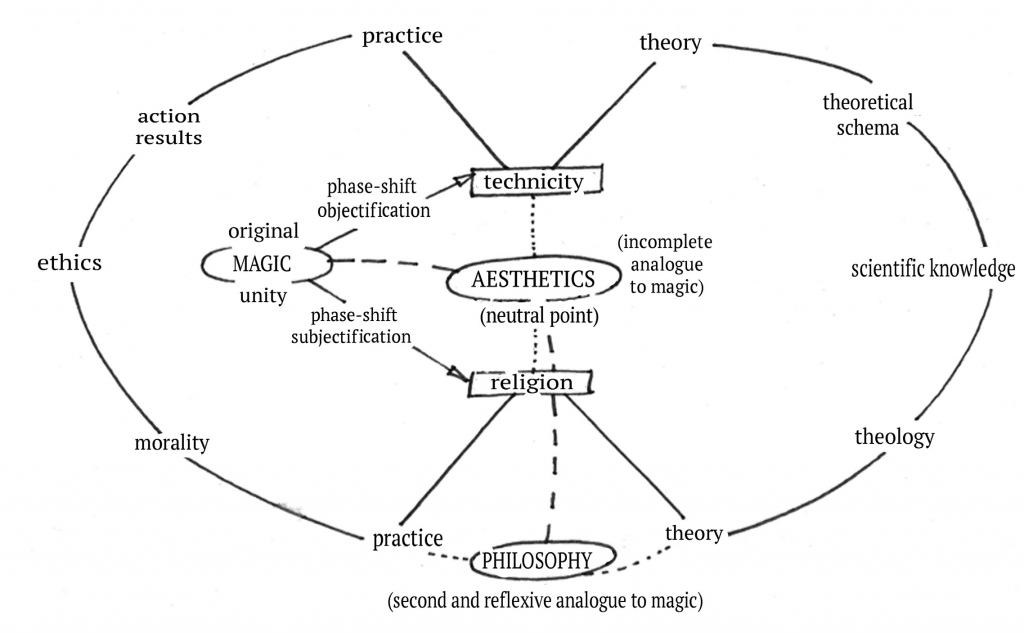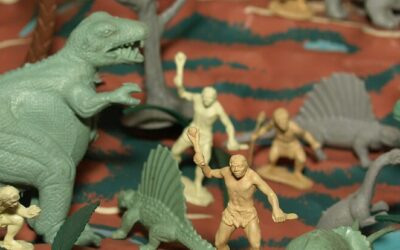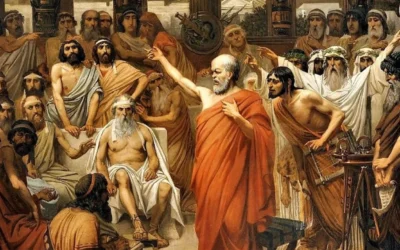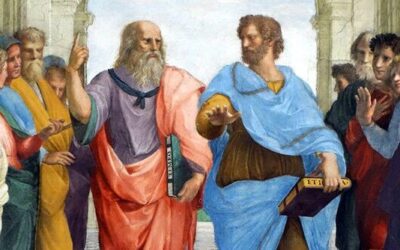Gilbert Simondon’s Life and Work
Gilbert Simondon (1924-1989) was a French philosopher who made significant contributions to the fields of cybernetics, technology, and the philosophy of individuation. His innovative work challenged traditional conceptions of the individual, technology, and the relationship between humans and machines.
Timeline of Gilbert Simondon’s Life
1924: Gilbert Simondon is born on October 2 in Saint-Étienne, France.
1940s: Simondon studies at the École Normale Supérieure and the Sorbonne, where he is influenced by the works of philosophers such as Henri Bergson and Gaston Bachelard.
1958: He obtains his doctorate from the Sorbonne under the supervision of Georges Canguilhem. His doctoral thesis, “L’individuation à la lumière des notions de forme et d’information,” lays the foundation for his theory of individuation.
1958: Simondon publishes “On the Mode of Existence of Technical Objects,” a pioneering work that explores the ontological status of technological objects and challenges the distinction between the “natural” and the “artificial.”
1960s: He teaches at various institutions, including the University of Poitiers and the University of Paris X Nanterre.
1963: Simondon becomes the Director of Studies at the École Pratique des Hautes Études, a position he holds until his retirement in 1983.
1964-1965: He delivers a series of lectures at the Sorbonne, which are later published as “L’individuation à la lumière des notions de forme et d’information,” his most famous work on the theory of individuation.
1965-1966: Simondon delivers lectures on the topics of imagination and invention, which are later published as “Imagination et Invention.”
1980s: His work gains increasing recognition in France and abroad, influencing philosophers such as Gilles Deleuze, Bernard Stiegler, and Félix Guattari.
1989: Gilbert Simondon passes away on February 7 in Palaiseau, France.
Early Life and Education
Gilbert Simondon was born on October 2, 1924, in Saint-Étienne, France. He grew up in a family that valued education and intellectual pursuits. Simondon’s early education instilled in him a deep curiosity about the world and a desire to understand the fundamental nature of things.
In the 1940s, Simondon studied at the prestigious École Normale Supérieure and the Sorbonne, where he was exposed to the works of influential philosophers such as Henri Bergson and Gaston Bachelard. These thinkers had a significant impact on Simondon’s intellectual development, shaping his interest in the concepts of duration, intuition, and the philosophy of science.
In 1958, Simondon obtained his doctorate from the Sorbonne under the supervision of Georges Canguilhem, a renowned philosopher of science. His doctoral thesis, titled “L’individuation à la lumière des notions de forme et d’information,” laid the foundation for his groundbreaking theory of individuation, which would become the cornerstone of his philosophical work.
Academic Career
After completing his doctoral studies, Simondon embarked on an academic career that would span several decades. He taught at various institutions, including the University of Poitiers and the University of Paris X Nanterre, where he shared his ideas with students and colleagues.
In 1963, Simondon was appointed as the Director of Studies at the École Pratique des Hautes Études, a prestigious research institution in Paris. He held this position until his retirement in 1983, using it as a platform to further develop and disseminate his philosophical ideas.
Throughout his career, Simondon delivered numerous lectures and seminars on a wide range of topics, including technology, cybernetics, psychology, and the philosophy of individuation. Many of these lectures were later published as books, ensuring that his ideas would continue to inspire and influence future generations of thinkers.
Major Philosophical Contributions
Gilbert Simondon’s philosophical work centers on two main areas: the philosophy of technology and the theory of individuation. His contributions to these fields have had a lasting impact on contemporary thought and continue to shape discussions in philosophy, social sciences, and technology studies.
1. “On the Mode of Existence of Technical Objects” (1958)
In this pioneering work, Simondon challenges the traditional distinction between the “natural” and the “artificial,” arguing that technological objects have their own unique mode of existence. He proposes that technical objects undergo a process of “concretization,” whereby they evolve from abstract, disjointed elements to increasingly integrated and coherent systems. This work laid the foundation for the field of philosophy of technology and inspired a new approach to understanding the relationship between humans and machines.
2. “L’individuation à la lumière des notions de forme et d’information” (1964-1965)
Simondon’s most famous work, “L’individuation à la lumière des notions de forme et d’information,” develops a comprehensive theory of individuation that challenges the traditional understanding of the individual as a pre-given entity. According to Simondon, individuation is a dynamic process through which an individual emerges from a pre-individual field of potentialities. This process is driven by the interplay of form and information, which allows the individual to differentiate itself from its environment and maintain its coherence over time. Simondon’s theory of individuation has had a profound influence on philosophers such as Gilles Deleuze and Bernard Stiegler, who have built upon his ideas in their own work.
Key Concepts and Theories
1. Individuation
Individuation is the central concept in Simondon’s philosophy. It refers to the process by which an individual emerges from a pre-individual field of potentialities. Simondon argues that individuation is not a one-time event but a continuous process that unfolds throughout an individual’s existence. This process is characterized by the interplay of form and information, which allows the individual to differentiate itself from its environment and maintain its coherence over time.
2. Transduction
Transduction is the mechanism through which individuation occurs. It is a process of transformation whereby a potentiality is actualized through a series of steps or phases. Simondon uses the example of crystallization to illustrate this concept: a supersaturated solution has the potential to form crystals, but this potential is only actualized when a seed crystal is introduced, triggering a chain reaction that leads to the formation of a crystal structure. Similarly, in the process of individuation, a pre-individual field of potentialities is actualized through a series of transductive operations that give rise to an individual.
3. Technicity
Simondon’s concept of technicity challenges the traditional view of technology as a mere tool or instrument. Instead, he argues that technical objects have their own unique mode of existence and undergo a process of “concretization,” whereby they evolve from abstract, disjointed elements to increasingly integrated and coherent systems. Technicity, then, is not just a property of technical objects but a fundamental aspect of the relationship between humans and their environment. Simondon’s work on technicity has inspired a new approach to the study of technology and has influenced thinkers such as Bernard Stiegler, who has developed the concept of “originary technicity” in his own work.
Influence and Legacy
Gilbert Simondon’s thought has had a profound influence on contemporary philosophy, particularly in the fields of technology studies, media theory, and social science. His work has inspired a generation of thinkers who have built upon his ideas and applied them to a wide range of domains.
One of the most notable figures influenced by Simondon is Gilles Deleuze, who drew heavily on Simondon’s theory of individuation in the development of his own philosophical system. Deleuze’s concepts of “difference” and “repetition” owe much to Simondon’s ideas about the pre-individual field and the process of transduction.
Another important thinker influenced by Simondon is Bernard Stiegler, who has expanded upon Simondon’s work on technology and technicity. Stiegler’s concept of “originary technicity” builds on Simondon’s idea that technology is not just an external tool but a fundamental aspect of human existence.
In recent years, there has been a resurgence of interest in Simondon’s work, particularly in the context of debates about the relationship between humans and technology. His ideas about the mode of existence of technical objects and the process of concretization have taken on new relevance in light of the rapid development of digital technologies and artificial intelligence.
Simondon’s legacy also extends beyond the realm of philosophy, influencing fields such as media studies, sociology, and anthropology. His ideas about individuation and the pre-individual field have been applied to the study of social groups, institutions, and cultural phenomena, offering new ways of understanding the dynamics of collective life.
Bibliography:
- Simondon, G. (1958). On the Mode of Existence of Technical Objects.
- Simondon, G. (1964-1965). L’individuation à la lumière des notions de forme et d’information.
- Simondon, G. (1965-1966). Imagination et Invention.
- Simondon, G. (1989). Du mode d’existence des objets techniques.
- Simondon, G. (2010). Communication et Information: Cours et Conférences.
Further Reading:
- Combes, M. (2013). Gilbert Simondon and the Philosophy of the Transindividual. MIT Press.
- Chabot, P. (2013). The Philosophy of Simondon: Between Technology and Individuation. Bloomsbury Academic.
- De Boever, A., Murray, A., Roffe, J., & Woodward, A. (Eds.). (2012). Gilbert Simondon: Being and Technology. Edinburgh University Press.
- Stiegler, B. (1998). Technics and Time, 1: The Fault of Epimetheus. Stanford University Press.
- Barthélémy, J-H. (2015). Life and Technology: An Inquiry Into and Beyond Simondon. Meson Press.
- Deleuze, G. (1994). Difference and Repetition. Columbia University Press.
- Hui, Y. (2016). On the Existence of Digital Objects. University of Minnesota Press.
- Mills, S. (2016). Gilbert Simondon: Information, Technology and Media. Rowman & Littlefield International.
- Sauvagnargues, A. (2016). Artmachines: Deleuze, Guattari, Simondon. Edinburgh University Press.
- Massumi, B. (2002). Parables for the Virtual: Movement, Affect, Sensation. Duke University Press.
- Toscano, A. (2006). The Theatre of Production: Philosophy and Individuation between Kant and Deleuze. Palgrave Macmillan.
- LaMarre, T. (2013). Gilbert Simondon and the Philosophy of the Transindividual. University of Minnesota Press.
- Iliadis, A. (2013). Informatics of Domination: Algorithmic Governmentality and the Challenge of Information. University of Pennsylvania Press.
- Bardin, A. (2015). Epistemology and Political Philosophy in Gilbert Simondon: Individuation, Technics, Social Systems. Springer.
- Scott, D. (2014). Gilbert Simondon’s Psychic and Collective Individuation: A Critical Introduction and Guide. Edinburgh University Press.



























0 Comments